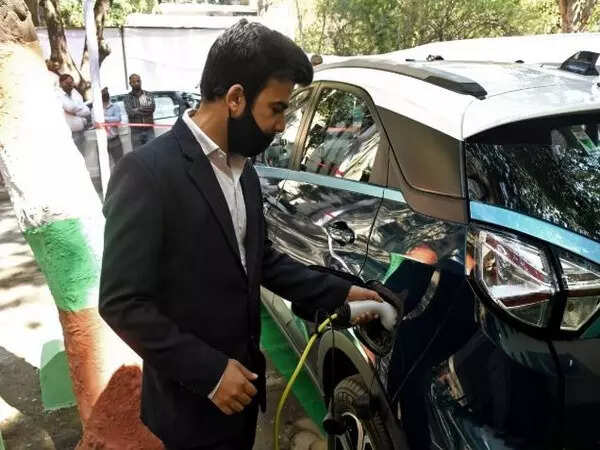[ad_1]

New Delhi: Electric vehicle (EV) penetration in India rose to 7.4% in calendar year 2024 (CY24), up from less than 1% in 2019, according to a report titled “Charging the Ecosystemic EV-olution” by SBI Capital Markets (SBICAPS). The report projected EVs to account for 30-35% of annual vehicle sales by FY30, with internal combustion engine (ICE) vehicles continuing to dominate Indian roads.
Globally, EVs made up one in four vehicles sold in CY24, compared to one in 40 five years ago. The report highlighted that India has unique growth drivers that could enable it to leapfrog in EV adoption, much like it transitioned directly from 3G to 4G in mobile communications.
Incentives driving growth
The EV boom in India is supported by targeted incentives, including a 5% GST on EVs compared to 28% for ICE vehicles, reduced road taxes in several states, and subsidies under FAME and PM E-DRIVE schemes. Import duty rebates under the SPMEPCI framework further encourage global EV manufacturers to set up local production.
The report noted that incentives are well-structured, focusing on specific vehicle categories and expanding charging infrastructure. This approach ensures that India can adopt mature global EV solutions without reinventing the wheel.
Growth in two- and three-wheelers
Two- and three-wheelers have been at the forefront of EV adoption due to lower costs, smaller batteries, and commercial use cases. Removable batteries and home charging options have also contributed to their rapid penetration, particularly in lower-income states. However, four-wheelers remain a challenge, as private car buyers prioritize performance and design over cost savings.
Investment in batteries and infrastructure
The report estimated that ₹500-600 billion in capital expenditure is required to achieve 100 GWh of EV battery capacity by FY30. Currently, India relies on imports for ~75% of its battery needs, but backward integration and joint ventures under the government’s Production Linked Incentive (PLI) scheme are expected to bring this down to 50% by FY30.
Charging infrastructure also requires significant investment. India has over 25,000 chargers, but only a small percentage are fast chargers. Expanding public charging infrastructure to 90,000 units by FY30 will need ₹200 billion in capital investment.
Financing gaps in the EV sector
The report identified financing as a key challenge for EV adoption. Consumer lending for EVs remains limited, with banks hesitant due to high loan-to-value (LTV) ratios and the absence of a robust secondary market. Developing comprehensive financing policies for the entire EV value chain is critical to addressing these gaps.
India’s EV market, according to the report, will depend on collaboration among stakeholders, including automakers, startups, financiers, and policymakers, to ensure sustainable growth.
[ad_2]
Source link



